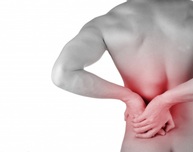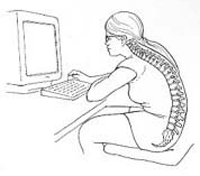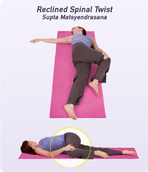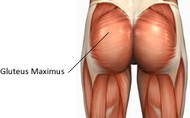"If your spine is inflexibly stiff at 30, you are old. If it is completely flexible at 60, you are young." Joseph Pilates  We all know someone with back pain or have probably experienced it ourselves at some point, statistics suggest that 4 out of 5 people will suffer with it at some point in our lives. Often the causes of low back pain are mysterious, you can have all the tests and MRI's that are available and still be none the wiser as to the cause. More often than not the cause of low back pain is damage to the soft tissue, which isn't picked up by x-rays and MRI's. The muscles, ligaments and fascia can be adversely affected by habitual poor posture, injury or trauma and chronic misuse and under-use of the soft tissues in the area. Studies suggest that trigger points (contraction "knots" in soft tissue) are a component of up to 93% of the pain seen in pain clinics and the sole cause of such pain as much as 85% of the time. (Gershwin; Fishbain quoted in Travell and Simons: Myofascial Pain and Dysfunction: The Trigger Point Manual Volume 1.) Trigger points are knots in the muscle which most often refer pain to a site distant to where the trigger point is located, so trigger points found in the Erector Spinae group, Quadratus Lumborum, Piriformis, Psoas and Gluteals can all contribute to pain in the lower back.  Posture plays a huge role in the health of our spine and all the structures surrounding it, there is a common belief that when we go to the gym or go for a run we are training our body which we are, but more importantly every single moment of every day we are training our body in the way we sit, the way we walk and this is even more important than the hour or two we spend each week or even each day we spend doing "training". Sitting in chairs is one of the worst things we can do for our postures it often encourages a posterior tilt of the pelvis, over stretching the musculature of the back and shortening the hip flexors on the front not to mention collapsing the diaphragm and making less space for the organs. If sitting in chairs can not be completely avoided then there are several things you can do to encourage a healthier posture, sit with your behind behind you and not in front of you, sitting on your ischial tuberosities (the two bony points in your buttocks) encourages the natural curvature in the spine avoiding the c-shaped "slump and dump" spine and helping to maintain the natural s-shaped curvature of the spine. Get up and move regularly, the spinal discs are spongy and cushion the vertabrae, but they naturally have poor blood supply, movement allows fluid to circulate around the discs.  Sorry ladies you're not going to like this (and maybe some gents too if you're into that sort of thing), what we wear on our feet is of huge importance not only to the health of our feet but also to the rest of our body. High heels completely throw the alignment of the body out, in order to maintain balance the calf muscles, hips and back have to tense so that we literally don't fall forward causing the muscles to fatigue and cramp. So if you want relief from low back pain ditch the heels, heels compress and damage the lumbar spine increasing osteoarthritis and degenerative disc disease in the low back.  Take a moment to think about how many movements you take your spine through every day.... Did you come up with many? Our spine is able to flex and extend (think forward bend and backward bend), laterally flex (side bend), and each of the vertabra in the spine are also able to rotate (twist). Ideally you should be taking the spine through its full range of motion everyday, if you don't use it you lose it.  One of the main culprits of low back pain is weak butt muscles, gluteal muscles not only stabilise the tailbone they help support the function of the low back muscles. If the glutes are weak, the lower back muscles have to work harder than normal to stabilise which makes them fatigued and sore. Squats are a great way to tone the gluteal muscles. So if you have low back pain or discomfort, have a think about how you are using your body every day, bring some healthy movement patterns in to your body and book in with a skilled body worker who can release some of those troublesome trigger points that are causing pain and can show you some self care stretches you can do at home!
0 Comments
Leave a Reply. |
AuthorAdvanced clinical massage therapist and yoga teacher. Archives
December 2023
Categories
All
|
 RSS Feed
RSS Feed